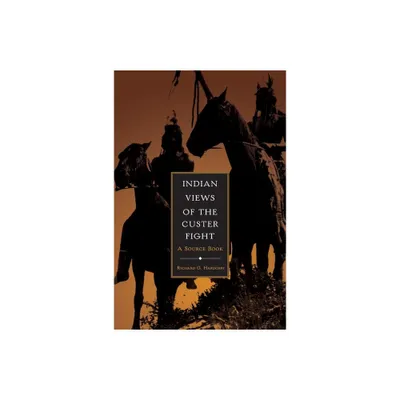Home
Hokahey! A Good Day to Die!: The Indian Casualties of the Custer Fight
Loading Inventory...
Barnes and Noble
Hokahey! A Good Day to Die!: The Indian Casualties of the Custer Fight
Current price: $16.95


Barnes and Noble
Hokahey! A Good Day to Die!: The Indian Casualties of the Custer Fight
Current price: $16.95
Loading Inventory...
Size: OS
*Product Information may vary - to confirm product availability, pricing, and additional information please contact Barnes and Noble
Traditionally historians of the Little Big Horn fight have focused on Custer and his troops-on what they were doing and where they died. But as one Miniconjou warrior told a gathering at a 1926 commemoration of the battle, the Lakotas and Cheyennes also lost brave men. These men had died defending their homes and families, and they too deserved recognition.
Hokahey! A Good Day to Die! details the final moments of each of the fallen Cheyenne and Lakota heroes. Richard G. Hardorff sifted through the many interviews with Indian survivors of the battle, cross-checking every story of a wounded or dead individual to ascertain who was killed, in which action, and by whom. He concludes that the Indian dead comprised thirty-one men, six women, and four children-astonishingly light losses when compared with the number of cavalry dead. Concise, well-written, and respectful of Cheyenne and Lakota cultural practices, this book is an essential contribution to our understanding of how the Cheyennes and Lakotas waged the Battle of the Little Big Horn.
Richard G. Hardorff is the editor of Lakota Recollections of the Custer Fight and Cheyenne Memories of the Custer Fight. Both are available as Bison Books.
Hokahey! A Good Day to Die! details the final moments of each of the fallen Cheyenne and Lakota heroes. Richard G. Hardorff sifted through the many interviews with Indian survivors of the battle, cross-checking every story of a wounded or dead individual to ascertain who was killed, in which action, and by whom. He concludes that the Indian dead comprised thirty-one men, six women, and four children-astonishingly light losses when compared with the number of cavalry dead. Concise, well-written, and respectful of Cheyenne and Lakota cultural practices, this book is an essential contribution to our understanding of how the Cheyennes and Lakotas waged the Battle of the Little Big Horn.
Richard G. Hardorff is the editor of Lakota Recollections of the Custer Fight and Cheyenne Memories of the Custer Fight. Both are available as Bison Books.


















